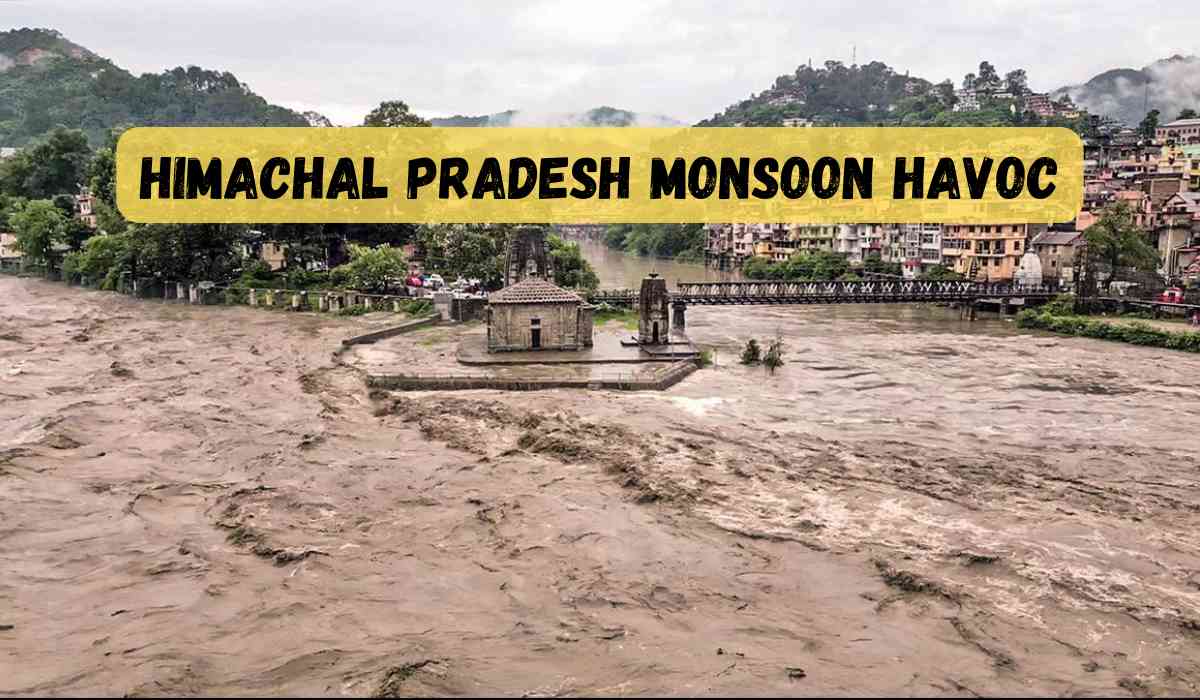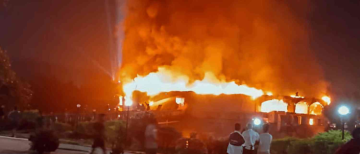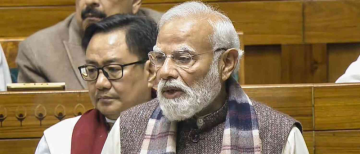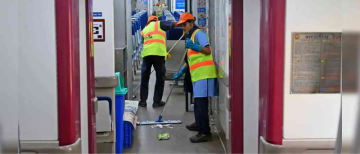As dark clouds loom and the first drops of monsoon rain kiss the soil of Himachal Pradesh, they bring not just relief from the summer heat but a haunting déjà vu of lives lost, homes flattened, roads swallowed, and a system that fails its people year after year.
Since the monsoon officially entered the state on June 20, Himachal Pradesh has once again found itself battling nature's fury. But what is more damning than the force of nature is the persistent lack of foresight and preparedness. Cloudbursts, flash floods, and landslides are not new to these fragile hills, yet the administrative response remains tragically predictable: too little, too late.
#WATCH | Mandi, HP | Several houses have been damaged and vehicles have washed away due to cloudburst and continuous heavy rainfall in the Seraj constituency.
(Visuals from Bassi village, Seraj) pic.twitter.com/uxz1ky0cFA— ANI (@ANI) July 3, 2025
Death and Devastation: A State in Crisis
According to the State Emergency Operations Centre (SEOC), at least 69 people have died and over 40 are missing due to rain-related incidents, including 14 cloudbursts and multiple flash floods. Among the deceased are victims of drowning, electrocution, landslides, and road accidents. The monsoon may be a seasonal phenomenon, but for many in Himachal, it has become an annual catastrophe.
The Mandi district is the worst hit, emerging as ground zero of the unfolding disaster. Thunag and Bagsayed, both part of former Chief Minister Jairam Thakur’s constituency, are practically cut off due to collapsed roads and failed communication. With 40 people missing and at least 17 confirmed deaths in Mandi alone, the scale of destruction is staggering.
Entire villages have been buried under debris. Terrifying visuals circulating on social media show rivers swollen into raging torrents, sweeping away bridges, homes, vehicles, and livestock. In Sirmaur, a video shows a deadly mix of boulders and mud crashing down a hill while people scream warnings—an apocalyptic scene that captures the helplessness of residents and the slow government response.
#WATCH | Shimla: Himachal Pradesh Chief Minister Sukhvinder Singh Sukhu says, "Since the rains began, 69 people have lost their lives, 37 people are missing, 110 people have been injured, and damages worth approximately Rs 700 crore have been incurred... Roads and water projects… pic.twitter.com/z2ZPDpvGwJ— ANI (@ANI) July 4, 2025
Infrastructure Crumbles, People Suffer
The monsoon fury has caused ₹495 crore worth of damage, with losses likely to climb higher as assessments continue. Public infrastructure—already fragile—has borne the brunt, with losses estimated at ₹287.80 crore to roads, power supply, water schemes, and public buildings.
Some key figures paint a grim picture:
-
Over 500 roads shut, with 246 roads out of bounds in just a few days
-
918 power transformers and 784 water supply schemes were disrupted
-
14 bridges washed away, crippling connectivity
-
150+ homes, 198 cow sheds, and 31 vehicles destroyed
-
300 livestock, including 164 cattle, were lost
-
More than 100 injuries were reported due to landslides, falls, and other rain-induced accidents.
The Manali-Keylong road was blocked due to flooding near Solang Nallah, and even the state capital, Shimla, wasn’t spared, with a massive landslide in Dhalli suburb. While no casualties were reported in Dhalli, locals blamed the National Highway Authority of India (NHAI) for negligence, alleging repeated collapses of a safety wall with no remedial action taken.
In the wake of heavy rainfall in different parts of the nation, spoke with the chief ministers of Gujarat, Himachal Pradesh, Rajasthan, Uttarakhand, and Chhattisgarh. Adequate numbers of NDRF teams have been deployed in the states for the people in need, and more reinforcements…— Amit Shah (@AmitShah) July 4, 2025
Humanitarian Response: Too Small, Too Late
Chief Minister Sukhvinder Singh Sukhu announced ₹5,000 as temporary rental aid for displaced families and a special relief package for those who lost homes and livestock. Rescue and relief operations are underway, with two NDRF teams, SDRF, police, and home guards deployed across affected regions.
The SEOC reports that 402 people have been rescued, including 348 in Mandi. Relief camps have been established, and the Indian Air Force has airdropped food packets in remote areas like Thunag and Janjheli. Yet, ground-level coordination remains a challenge due to poor road access and damaged telecom networks, forcing authorities to activate Intra Circle Roaming (ICR) and deploy ISATs for emergency communication.
But these measures, while critical, feel like band-aids on a bullet wound.
Whoahh, that was close!!
A massive landslide hit the Shillai area of Sirmaur district, Himachal Pradesh, India today, along National Highway 707 👀pic.twitter.com/nVvfZWty90— Volcaholic 🌋 (@volcaholic1) May 30, 2025
Year After Year, Disaster Strikes—and Nothing Changes
It’s a grim irony that these tragedies aren’t new. Every year, Himachal Pradesh—and other Himalayan states like Uttarakhand—face similar natural events. Landslides, flash floods, cloudbursts, and washed-away bridges have become routine headlines during monsoon months. Yet, each year, the administration seems to start from zero, scrambling for emergency responses instead of investing in long-term safeguards.
Infrastructural vulnerabilities remain unaddressed. Safety walls collapse and aren't rebuilt. Warning systems are delayed or absent. Communication lines fail. Roads are rebuilt only to be washed away by the next monsoon. Meanwhile, families are left homeless, villagers fend for themselves in the face of raging torrents, and the death toll continues to rise.
And then the cycle resets the next year.
A Call for Accountability, Not Just Sympathy
The Chief Minister claims the government stands with disaster-affected families. The Union Home Minister promises central assistance. But what citizens desperately need is proactive planning, resilient infrastructure, and disaster preparedness, not just sympathy and post-disaster aid.
How many more people must die before early warning systems are strengthened? Before landslide-prone zones are demarcated and off-limits for construction? Before weather-resilient infrastructure becomes a norm and not a luxury?
शिमला : ढली के लिंडीधार में भारी लैंडस्लाइड - फोरलेन का डंगा गिरा - सैंकड़ों सेब के पेड़ दबे।
घर छोड़ भागे लोग, 5 घरों को खतरा।#Shimla #Dhali #Landslide #HimachalNews #DDNewsHimachal pic.twitter.com/dKaekscobU— DD News Himachal (@DDNewsHimachal) July 3, 2025
The Real Disaster Is Policy Paralysis
Yes, excessive rainfall, cloudbursts, and flash floods are natural phenomena—out of human control. But what is absolutely in the government's hands is how well it prepares to deal with them. Right now, that preparation is woefully inadequate. For the people of Himachal Pradesh, nature is not the only threat—it is also the apathy of governance, the complacency in administration, and the failure to learn from the past.
If history continues to repeat itself each monsoon, then the real tragedy is not the rain, but our refusal to act.
With inputs from agencies
Image Source: Multiple agencies
© Copyright 2025. All Rights Reserved Powered by Vygr Media.






















